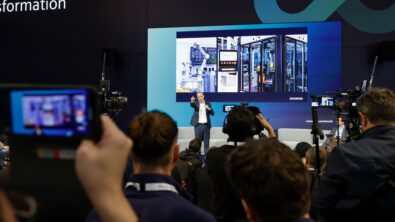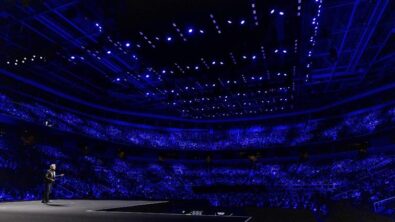Part 3 – Digital Manufacturing Delivers in a Changing Landscape
Integrate the Virtual World and the Real World
From optimizing raw material consumption and piece/part fabrication to final assembly and finished product, those involved in manufacturing understand the complexity of trying to squeeze months, even years of planning and preparation down to operational seconds. Yet this is exactly the goal that needs to be achieved during implementation and ramp-up during a new product launch. It’s likely the most critical phase of bringing product to market; your long-lead items for production are baked, capital equipment investments are committed, the mechanical, electrical, industrial and software disciplines (who hopefully have been working closely together before now) have done their planning. And now, in the shortest amount of time possible, the physical reality of production has to come together to meet that all-consuming launch date.It’s a high-risk, high-pressure phase because the cost of change is exponentially higher and the risk of delays can quickly become a C-level conversation.
It’s likely the most critical phase of bringing product to market; your long-lead items for production are baked, capital equipment investments are committed, the mechanical, electrical, industrial and software disciplines (who hopefully have been working closely together before now) have done their planning. And now, in the shortest amount of time possible, the physical reality of production has to come together to meet that all-consuming launch date.It’s a high-risk, high-pressure phase because the cost of change is exponentially higher and the risk of delays can quickly become a C-level conversation.
The ugly truth is that unexpected cost in this phase is extremely hard to recoup, especially from your automated production capacity. This is just one of the reasons Tecnomatix brings our next innovative strategy to market; integrate virtual to physical.
In the world of robotics and automation, the act of systems implementation and ramp-up is called commissioning. The scenario described above is physical commissioning so we tend to describe this virtual to physical integration as virtual commissioning. The concept is quite simple. Instead of waiting until a system is built on the shop floor, we use a virtual model of those systems integrated with the actual hardware to simulate, test and debug everything from robot programs and device behavior to PLC code and safety interlocks. This means that all of the disciplines I’ve described above can collaborate, communicate and test their components well before production implementation.
The best way to get a sense of what I’m talking about is to see it in action. Here’s a video taken earlier this year at our user event, PLM Connection, where Todd Bengtsson, Director for the Manufacturing Business Group – Automotive, describes the components, how they work and the value of virtual commissioning.
Todd’s demonstration is a great example of how this innovative strategy directly impacts your ability to reach production potential.
In the next blog I’ll discuss the third innovative strategy, measure to continuously improve. You say you’ve heard that before? Tune-in and find out why the way we do it is a game-changer.


